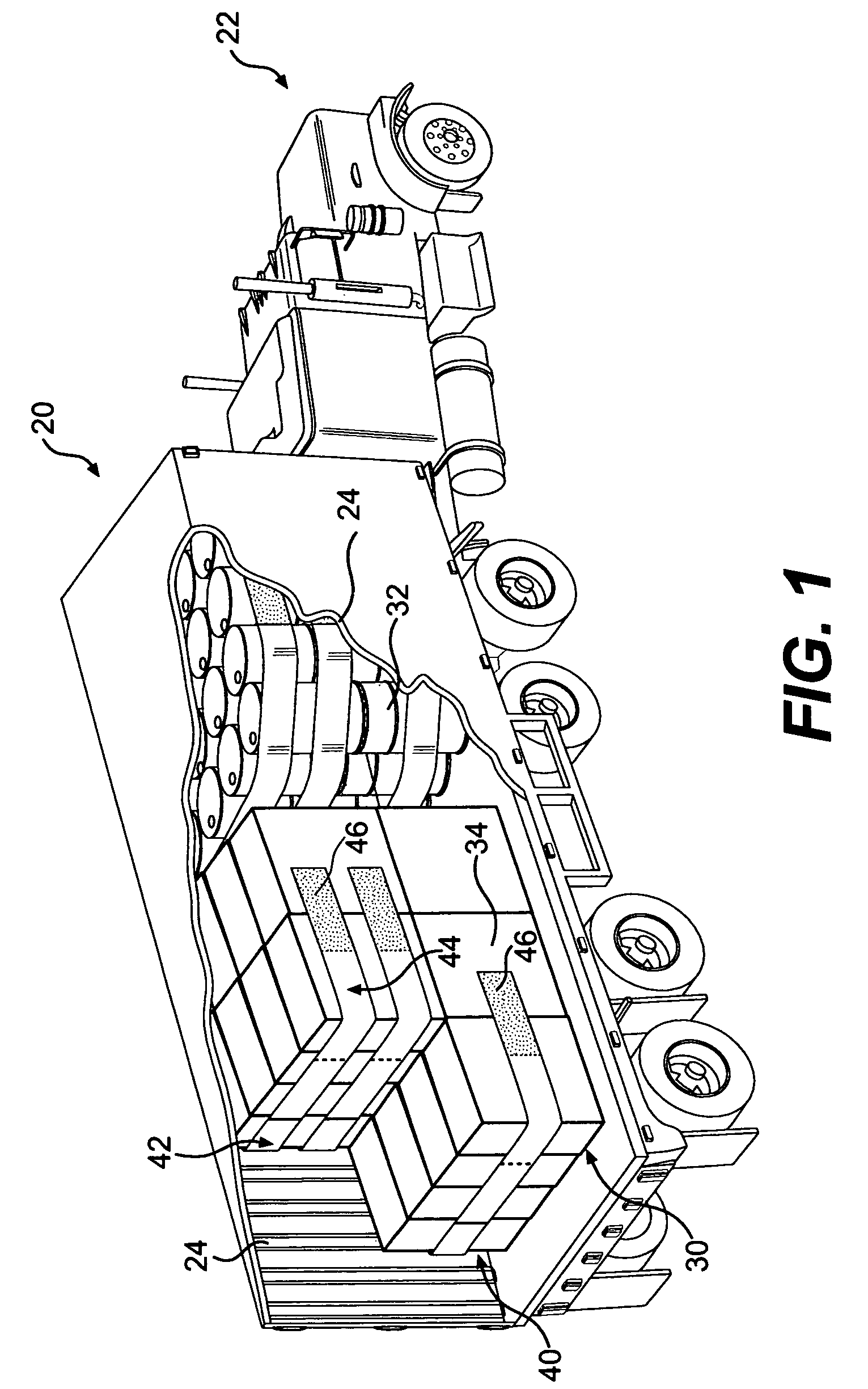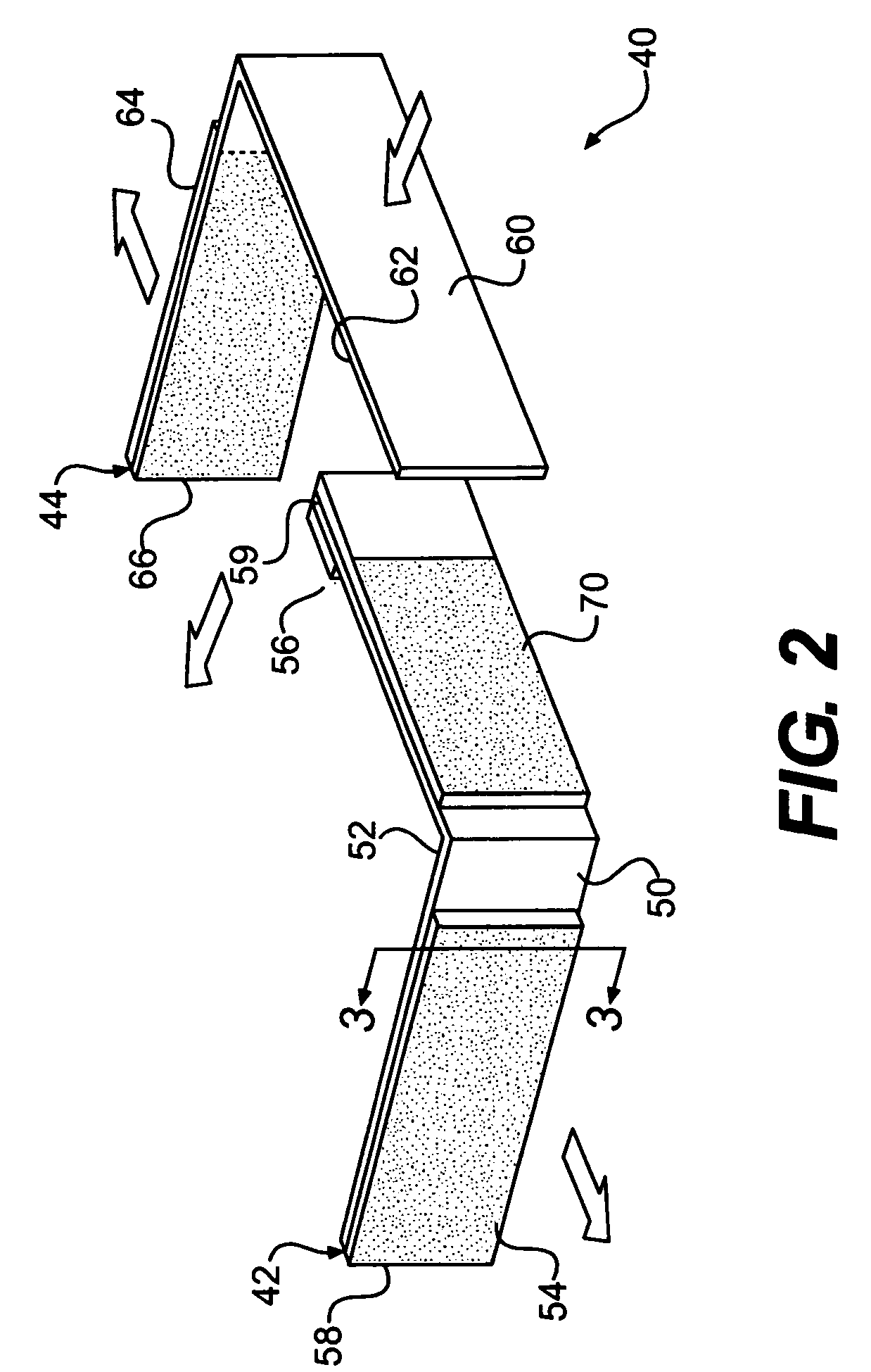Overland cargo restraint system and method
a cargo restraint and cargo technology, applied in the direction of load securing, transportation and packaging, transportation items, etc., can solve the problems of emergency braking, trucks are subject to stopping and starting forces, and the mass of transport loads can produce considerable momentum force, etc., to achieve efficient and simple removal of the securing system and effective use
- Summary
- Abstract
- Description
- Claims
- Application Information
AI Technical Summary
Benefits of technology
Problems solved by technology
Method used
Image
Examples
Embodiment Construction
Context of the Invention
[0037]FIG. 1 shows an axonometric view of an operating environment of the invention. In this view, a transport or cargo container 20, such as a truck body or truck trailer, is shown towed by a tractor 22 for land transport. Trailers 20 such as these are also operable to be mounted on railway flat cars. Trailer 20 carries cargo 30 to be restrained, such as fifty five gallon drums 32, boxes 34, plastic wrapped pallets, and the like (not shown).
[0038]A partially cut away portion of FIG. 1 depicts a load restraining system 40 in accordance with the invention, which is operable to be adhered to an interior wall surface 24 of the trailer 20. The load restraining system 40 shown in FIG. 1 comprises a pair of opposing restraining strips. A first load restraining strip 42 and a second load restraining strip 44 are adhered to the interior side walls 24 of the trailer 20 by the use of adhesive elements 46 that are operable to self adhere to opposing interior side walls ...
PUM
 Login to View More
Login to View More Abstract
Description
Claims
Application Information
 Login to View More
Login to View More - R&D
- Intellectual Property
- Life Sciences
- Materials
- Tech Scout
- Unparalleled Data Quality
- Higher Quality Content
- 60% Fewer Hallucinations
Browse by: Latest US Patents, China's latest patents, Technical Efficacy Thesaurus, Application Domain, Technology Topic, Popular Technical Reports.
© 2025 PatSnap. All rights reserved.Legal|Privacy policy|Modern Slavery Act Transparency Statement|Sitemap|About US| Contact US: help@patsnap.com



